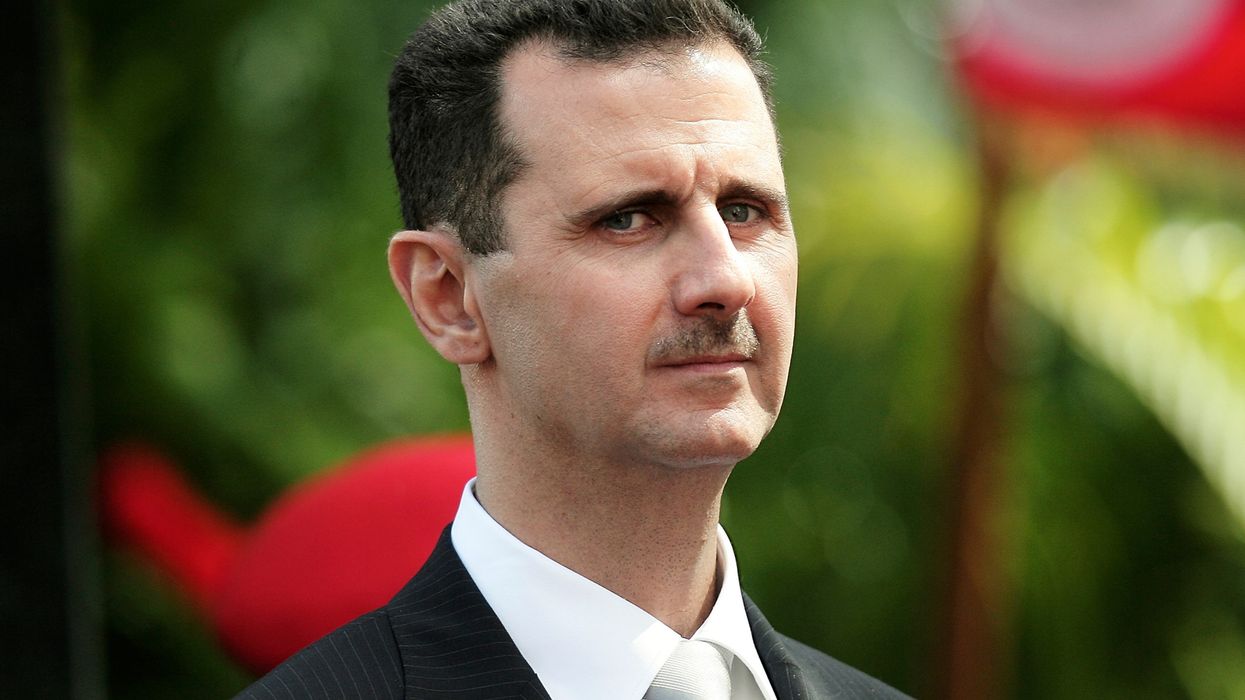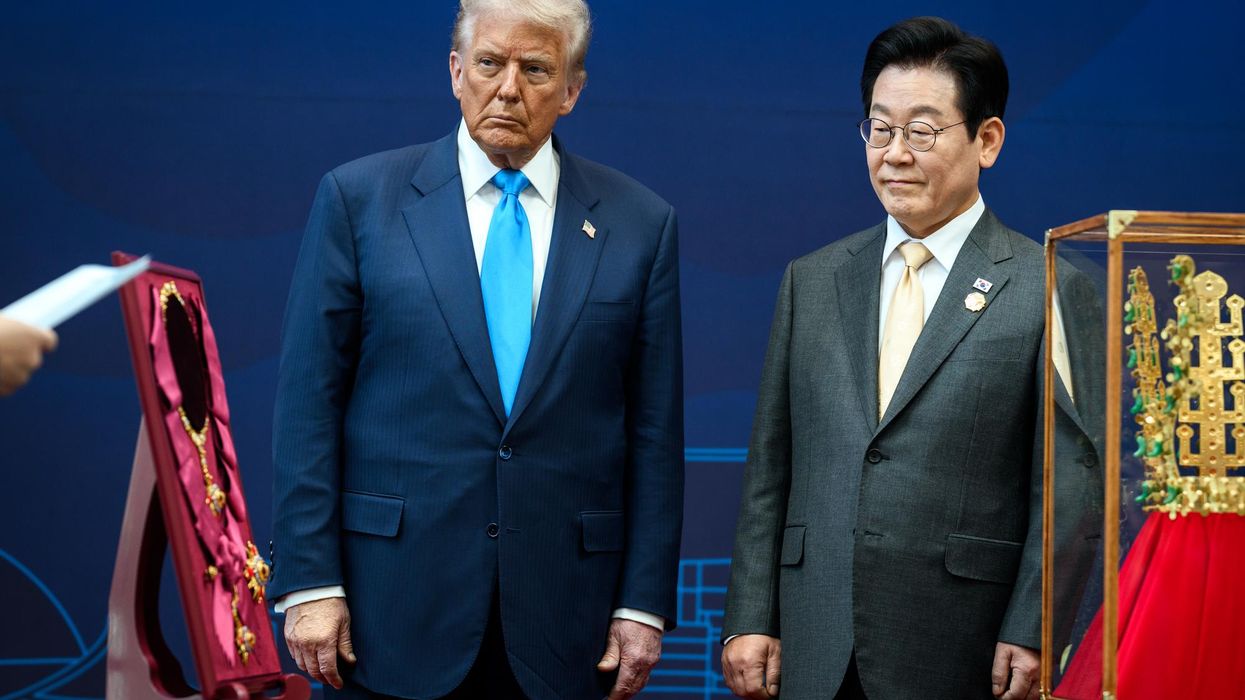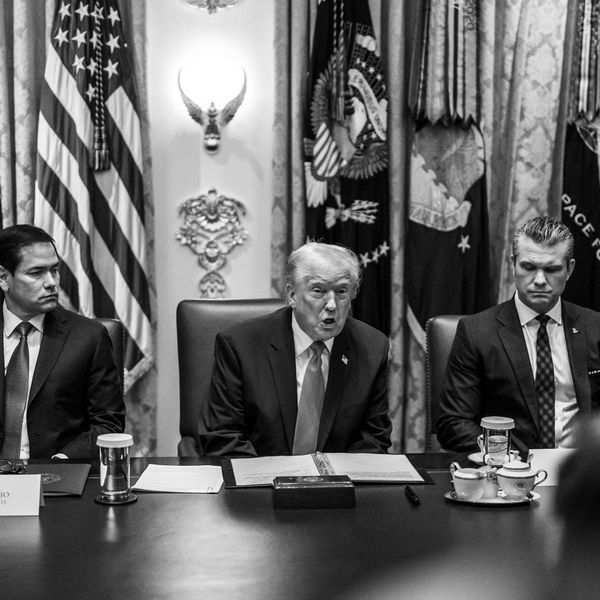At CANSEC, North America’s largest arms trade show last week, former NATO Secretary General Lord George Robertson invoked the spirit of Lyndon Johnson’s 1964 speech: “Only by preparing for war will we be able to protect peace.”
Robertson described an era that saw the formation of independent post-Soviet states in Eastern Europe and the NATO-Russia Founding Act of 1997 with Russia’s first President Boris Yeltsin that thawed relations after the Cold War and formalized an agreement of collaboration.
“The Chinese were in the shadows and we all thought that globalization was a wonderful idea,” he intoned.
Now, the NATO alliance is navigating a “grey-zone war without Geneva Conventions” in Ukraine and nuclear threats are normalized in the absence of “Cold War tripwires which prevented accidental and miscalculated Armageddon” as nuclear treaties hang in suspension," Robertson said.
Amid Russia’s war in Ukraine, he added, Trump’s rhetoric around the annexation of Greenland and Canada, and the looming threat of authoritarianism, liberal and democratic values are “all threatened as never before.”
With the NATO summit convening at the Hague this month, members are being called to increase military spending to at least 3% of GDP. The focus is on European re-armament, and what Lord Robertson described as “a new ambivalence of the United States President to the alliance.”
Hosted in Ottawa by the Canadian Association of Defence and Security Industries between May 28 and 29, CANSEC certainly took advantage of the current moment with the trendlines for defense spending set on quantum and cloud computing, artificial intelligence, mesh networks and satellites.
As governments scramble to speed up procurement, CANSEC literally sold the military industry as a tool of foreign policy.
"Sovereign defense capabilities are not only economic drivers but tools of foreign policy that have been sadly underutilized by successive Canadian governments," said Christyn Cianfarani, the head of CADSI, in her welcome.
“If we are attacked, and if we are not prepared, then everything else doesn’t make sense. There won’t be any pensions, there won’t be any education,” declared Lithuania’s former Foreign Minister Gabrielius Landsbergis, referring to his country raising taxes last year to pay for defense. Meeting ambitious NATO spending targets requires “rethinking of the social contract.”
Like others, he pointed to the looming threat of Russia as justification.
“The situation in Europe has never been more dangerous. Europe has not been preparing,” he said.
“For defense to be effective, the only person who needs to believe in Article 5 is Putin,” Landsbergis added, stressing that leaders need to communicate to their electorates the existential risk to NATO and the European Union. “The next war, if it comes, would look a lot like this one and it could again be against Russia.”
Invoking Canada’s historic wartime mobilization that built up the world’s third largest navy by the end of the Second World War, Canadian Defence Minister David McGuinty said that the government is taking “immediate and decisive action” on the global threats of Russia, China, North Korea and Iran “to ensure our military has the tools to defend our country and continent.”
“We simply cannot afford to wait a decade for the capabilities we need today,” he said.
Over the past seven months, Canada has been developing the country’s first national military industrial strategy and greasing the wheels for the private sector to more easily access Canadian defense contracts.
Wendy Hadwen, Assistant Deputy Minister on the policy’s development at Canada’s Department of National Defence, explained that reforms are based on the 2011 Jenkins report that proposed transformations for the Canadian military research and development sector, including placing higher value on Canadian intellectual property and technological innovation.
“We would like to create the conditions for financial industries to value investing in Canada’s defense industries,” she said. “In the ideal, our defense attachés would be champions of our defense industries. They are not today because we do not have a tradition of using our military to champion industry.”
In addition to simplifying procurement, Canada is working on securing supply chains and designating sovereign military capabilities. To do so, it is looking to other countries’ policies for inspiration, like Sweden’s “Total Defence Strategy” and the U.K.’s newly released review.
As Canada’s blueprint is being developed, Canadian Prime Minister Mark Carney signaled his intent to sign onto a $1.25 trillion European Union military financing plan called ReArm Europe by July 1, reducing dependency on procurement from the United States. The ReArm vision includes a European savings and investment union to encourage banks to invest in military companies.
The private sector’s growing role in Atlantic rearmament is also being facilitated by NATO-DIANA (Defence Innovation Accelerator for the North Atlantic), an incubator for companies developing dual-use deep technology.
But while Canada looks at developing the domestic military sector and pivot procurement to Europe and other allies like Australia and South Korea, Trump is set on locking Canada more firmly into American strategy.
The Golden Dome missile defense project, announced in January, revives Ronald Reagan’s Strategic Defense Initiative (“Star Wars”), a Cold War satellite program designed to protect the U.S. from Soviet missiles. It was shelved at the time because of inadequate technology and exorbitant costs.
Equated in scale and ambition with the Manhattan Project, this plan is being resurrected at a breakneck pace to defend against hypersonic missiles. And while the Golden Dome is focused on the U.S., Trump’s executive order demanded a review of “theater missile defense posture to defend United States troops deployed abroad.”
Golden Dome relies on missile sensors, space-based interceptors to destroy missiles, and a satellite communication network. Modeled on the Israeli Iron Dome, it is more complex because it covers massive territory including polar orbits.
Expected costs are $175 billion, with Trump pushing for operation by 2029, though recent estimates expect up to $831 billion over two decades. Trump recently stated that if Canada remains a sovereign nation, the Golden Dome plan will cost it $61 billion dollars. If Canada is annexed, it will be free.
SpaceX was dubbed the “frontrunner” for the Golden Dome’s communications backbone earlier in April. Elon Musk’s satellite company has already made inroads into rural and northern Canada.
Canada has not yet committed to the plan, which has resurrected old debates.
“I do think that the strategic implications of such a system, including both nuclear and space arms racing, would make us less safe,” said Jessica West, senior researcher at Project Ploughshares, referring to the Golden Dome’s global strike capabilities, including those from space.
Defending against long-range missiles is difficult, and losing the deterrent value of nuclear weapons risks an arms race, she said, also referring to Star Wars as a “flashy, but failed, concept.”
The Russia-United States New Strategic Arms Reduction Treaty (New START) expires next year. The Russian Foreign Ministry has already acknowledged that Russia “may face the need for moving away from restrictions on nuclear and missile arsenals,” and the potential for space to become “another scene of military confrontation.”
Some have argued that Canada should commit to disarmament efforts for hypersonic missiles.
But this past December, former Canadian Foreign Affairs Minister Mélanie Joly called on Canada to be “extremely realist with the threat towards our Arctic” and to be “pragmatic” in the possibility of arming Canada with ballistic missiles. Should this materialize, it would overturn a 2005 decision limiting Canada’s capabilities to radar surveillance and detection.
With NATO rhetoric at CANSEC broadly leaning on Article 3, or the obligation for countries to defend themselves, Canadian missile armament has repeatedly resurged in public debate to defend against North Korea or more recently to protect the Arctic, dubbed “our future Panama Canal.”
Setting the tone for the NATO Summit, CANSEC made it clear that member states are keen on protecting democracy not through arms control and international humanitarian law, but by more closely integrating militaries with the private sector. To do this, they need to sell not just the wars of today, but the wars of tomorrow.
















